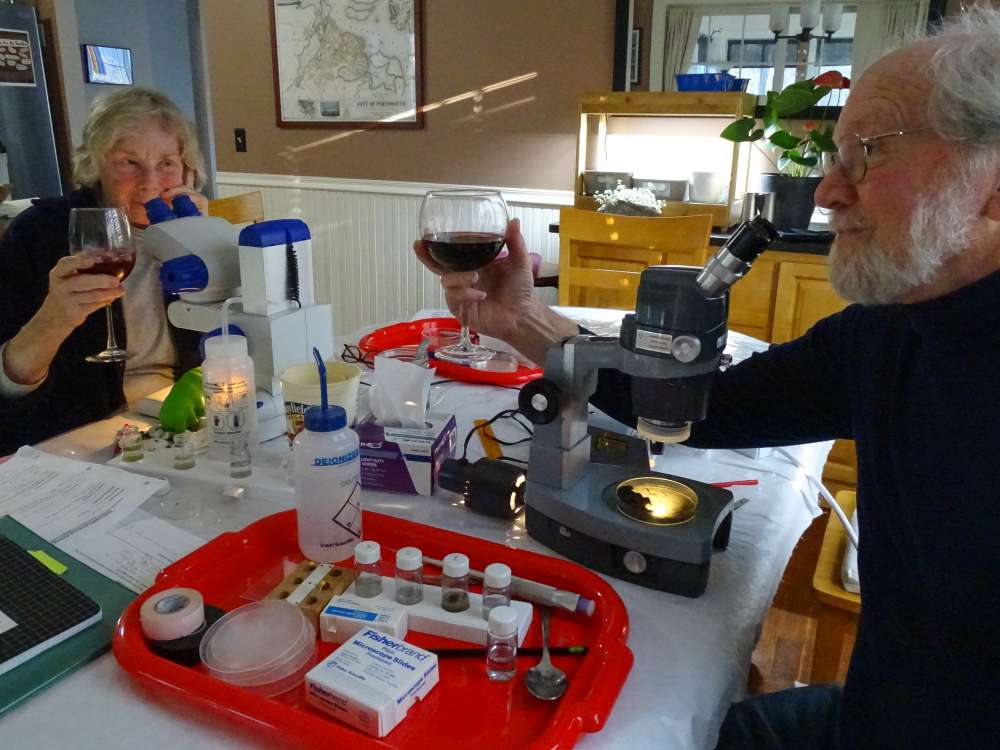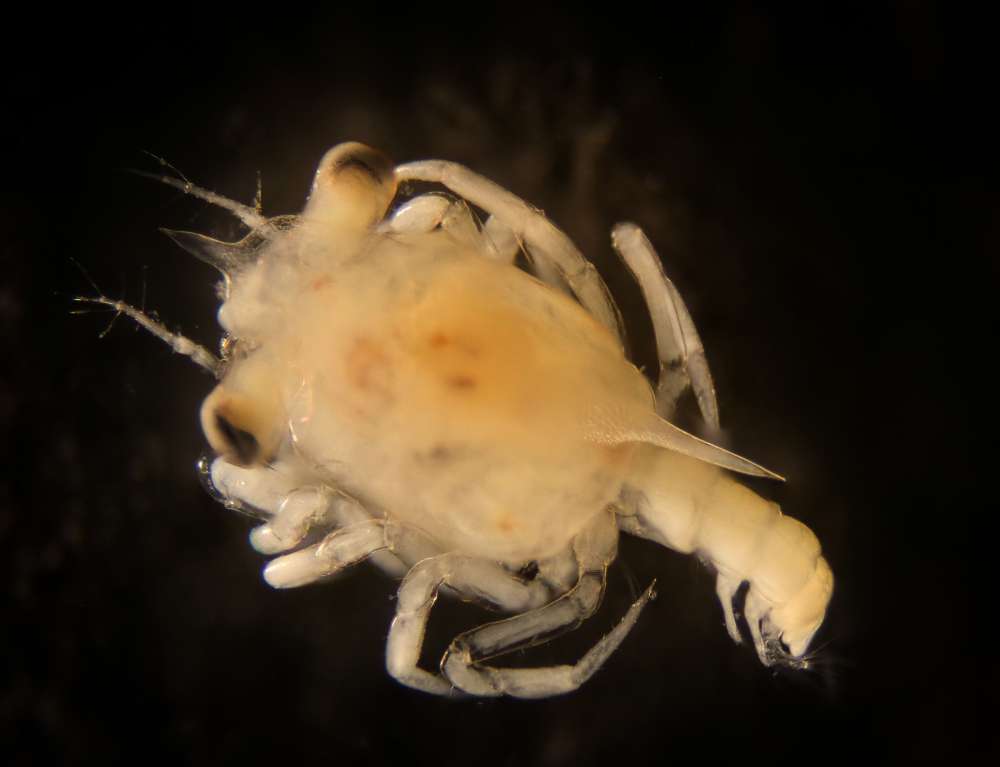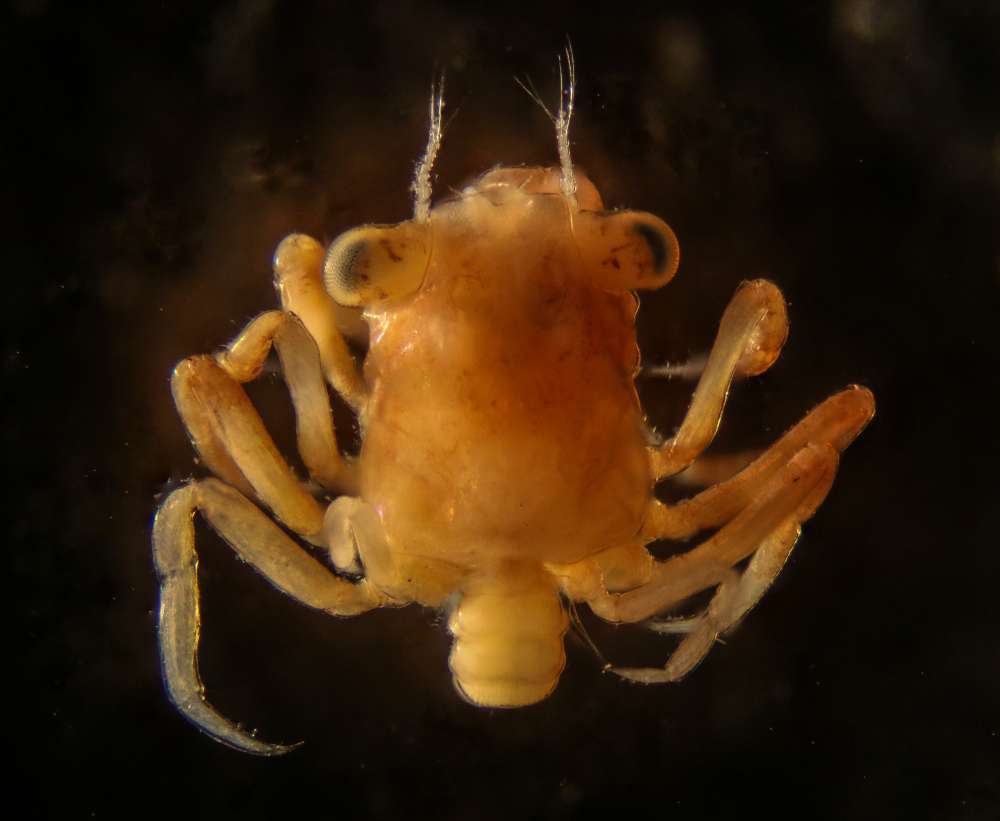The Wrack
The Wrack is the Wells Reserve blog, our collective logbook on the web.
The Wrack is the Wells Reserve blog, our collective logbook on the web.
The advice is clear for those of us in our seventies: Stay at home and minimize contact with the outside world for the time being. But wait—we’ve come to love our once-a-week volunteering visits to the reserve's research lab, where we have been sorting and identifying plankton from Wells Harbor for 2+ years. What are we going to do now?
Ta-da! With the ready approval of the research director, we borrowed some essential equipment from the lab and are continuing our project at the kitchen table of our "bunker"! Research assistant Laura Crane lives a quarter mile from us here in Kittery and has been a willing go-between. Laura keeps us supplied with needed items (preservative, glassware), new samples to pick, and sometimes even cookies!

This "forced" block of remote volunteering time gives us a chance to work on a useful photographic technique, called focus stacking, which provides much better images of the micro-critters that are the subject of our work. Using tools embedded in Adobe Photoshop, we can combine multiple shots of a single specimen, each focused on some particular detail, into one blended image that displays the best in-focus portions from a whole series of shots.
A single photomicrograph typically has a very narrow depth of field; only a small portion of the specimen is in focus while everything else is blurry. A focus-stacked image provides a composite shot with much more of the subject in good focus, creating a 3D effect. You can see the extra detail in these example images of two common crabs in their larval stage.


As the Gulf of Maine experiences unprecedented warming, the reserve's lengthy plankton monitoring project supplies an especially valuable time-series of year-round data on fish and crab presence and abundance. We were working on samples from fall 2019 as the COVID-19 advisories became more dire and know the research folks will keep an unbroken stream of plankton samples coming back from Wells Harbor to the research lab. We're glad to be plugging along from home, helping to avoid a backlog of unsorted material when this pandemic finally subsides.
The research team thinks we are doing them a favor by helping out with the picking and keying. The truth is we are the beneficiaries! Not only do we feel useful, we get to keep contributing to the important work of the Wells Reserve. We'll get through this bizarre period with a project on track and our sanity intact!